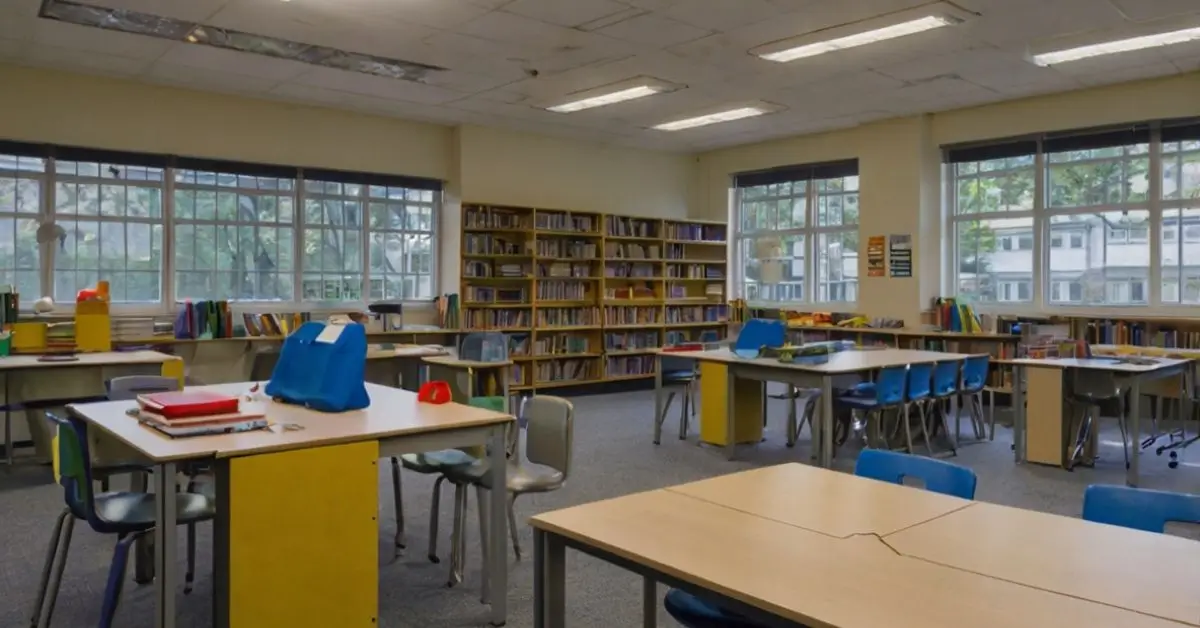In education, QBE stands for Quality-Based Education, a model designed to ensure that students not only gain knowledge but also acquire the necessary skills and competencies to succeed in their personal and professional lives. QBE focuses on the overall quality of education, aiming for improvements that will enable students to become well-rounded, responsible citizens. This approach emphasizes the integration of practical, analytical, and problem-solving abilities rather than merely rote memorization of facts.
What is QBE in Education? A Comprehensive Understanding
Quality-Based Education (QBE) is a shift in the educational paradigm from traditional teaching methods toward a model that prioritizes quality and outcomes over quantity and input. It advocates for educational practices that focus not just on the content delivered but also on the manner in which students learn and apply knowledge. Unlike conventional education systems that often emphasize standardized testing and rigid curricula, QBE is more holistic and learner-centered.
In QBE, students are evaluated based on their ability to demonstrate skills and competencies, which are essential for success in real-world scenarios. It encourages a blend of academic knowledge and practical abilities, offering a broader perspective on how education should prepare individuals for adulthood.
Key Components of Quality-Based Education
- Student-Centered Learning
QBE places a significant emphasis on the individual needs, interests, and learning styles of students. It moves away from a “one-size-fits-all” approach and instead focuses on adapting teaching methods to fit the diverse needs of learners. - Competency Development
Competency-Based Learning (CBL) is a core part of QBE, wherein students are expected to master certain competencies or skills before moving on to more complex topics. This approach helps students build a strong foundation and gain mastery in each subject area. - Focus on Outcomes
Rather than simply completing a set curriculum, the focus of QBE is on the outcomes—what students can actually do with the knowledge they’ve gained. The aim is for students to acquire skills that they can apply in various aspects of life, such as problem-solving, critical thinking, communication, and collaboration. - Assessment of Skills and Knowledge
QBE uses diverse and ongoing forms of assessment to evaluate student progress. Traditional exams might still have a place, but a significant portion of assessments focuses on practical demonstrations, projects, and presentations that reflect real-world applications. - Continuous Improvement and Feedback
An essential characteristic of QBE is continuous feedback and improvement. Students receive ongoing guidance and support to help them improve their competencies, while instructors themselves also evaluate and refine their teaching strategies.
Why is QBE Important in Modern Education?
The importance of QBE lies in its ability to address the evolving needs of the global workforce. In a rapidly changing world, simply acquiring knowledge is no longer sufficient. Students need to be able to adapt, think critically, and solve problems effectively. QBE prepares students to be lifelong learners, capable of continuously acquiring new skills throughout their careers.
Furthermore, the traditional education system often lacks the flexibility to cater to diverse learning needs. QBE, on the other hand, acknowledges that each student has unique strengths and weaknesses, and it strives to provide a tailored educational experience for everyone.
How Does QBE Compare with Traditional Education?
Comparison Chart: QBE vs Traditional Education
| Aspect | QBE | Traditional Education |
|---|---|---|
| Focus | Skills and competencies | Knowledge retention and testing |
| Learning Approach | Student-centered, personalized learning | Teacher-centered, standardized learning |
| Assessment Methods | Ongoing, diverse assessments (projects, presentations) | Periodic exams, quizzes |
| Curriculum | Flexible, based on competencies | Fixed, based on a set syllabus |
| Teaching Method | Adaptable, focused on problem-solving and critical thinking | Rigid, with a focus on memorization |
| Outcome | Real-world application of skills | Academic knowledge and theoretical understanding |
As the chart illustrates, QBE is distinctly different from traditional education in almost every aspect. It emphasizes a shift from the fixed, one-size-fits-all approach toward a more adaptable, outcomes-driven model.
The Benefits of QBE in Education
- Improved Student Engagement
When students are given more control over their learning paths, they tend to engage more deeply with the content. This personalized approach ensures that they are working at a pace and level that is suited to their abilities. - Better Preparation for the Workforce
The skills acquired through QBE, such as problem-solving, teamwork, and communication, are highly sought after by employers. By emphasizing practical, real-world competencies, QBE helps students make a smoother transition from education to employment. - Flexibility and Lifelong Learning
With the increasing pace of technological advancements, it is essential to prepare students for lifelong learning. QBE’s competency-based model ensures that students are constantly improving and acquiring new skills, making them adaptable to future changes in the job market. - Fostering Critical Thinking
Traditional education often relies on rote memorization, while QBE encourages students to think critically about what they are learning. This helps them develop the analytical skills necessary for solving complex problems, which are essential in today’s rapidly changing world.
The Challenges of Implementing QBE
While the benefits of QBE are clear, its implementation can pose several challenges. These include the need for highly skilled teachers who can adapt to personalized learning models, the creation of appropriate assessment tools, and the restructuring of curriculums to accommodate competency-based learning. Additionally, schools and educational institutions may face resistance to this change from both teachers and students accustomed to traditional methods of teaching and testing.
Despite these challenges, many educators and policymakers are exploring ways to integrate QBE into their schools to ensure that students are better prepared for the challenges of the modern world.
How Can Schools Implement QBE?
For educational institutions looking to transition to a QBE model, there are several steps to consider:
- Curriculum Design
Schools should redesign their curricula to focus on competencies rather than specific subject areas. This includes identifying key skills and competencies that students should master at each grade level. - Professional Development for Teachers
Teachers need to be trained in competency-based teaching methods. This training will enable them to adapt to a more flexible, student-centered approach and create meaningful learning experiences for their students. - Assessment Reforms
Schools must develop new forms of assessment that evaluate students’ practical abilities, such as portfolios, project-based learning, and peer assessments. - Continuous Improvement
As with any educational reform, QBE requires ongoing evaluation and refinement. Schools must be willing to adjust their teaching strategies and assessment methods to meet the evolving needs of students.
Conclusion:
What is QBE in education is not just a shift in teaching methods but a fundamental change in how we perceive and approach learning. Quality-Based Education focuses on equipping students with the skills, knowledge, and competencies they need to thrive in a fast-paced, ever-evolving world. By focusing on student-centered learning, competency development, and real-world applications, QBE offers a promising alternative to traditional education models that can better prepare students for the challenges of tomorrow.
Implementing QBE requires thoughtful planning, significant changes in curriculum and teaching methods, and a commitment to continuous improvement. However, the benefits it offers to students—better engagement, skill development, and preparation for the workforce—make it a worthwhile investment in the future of education.
FAQs
- What is the main goal of QBE in education?
The main goal of QBE is to ensure that students acquire practical skills and competencies that they can apply in real-life situations, moving beyond memorization and theoretical knowledge. - How does QBE benefit students?
QBE benefits students by providing a more personalized, student-centered learning experience that focuses on developing essential life skills such as critical thinking, problem-solving, and communication. - Is QBE the same as competency-based learning?
Yes, QBE incorporates competency-based learning, where students progress based on mastering specific competencies or skills, rather than simply completing a set curriculum. - Can QBE be implemented in all schools?
While QBE can be implemented in most schools, it requires significant changes in teaching methods, assessment practices, and curriculum design, which may be challenging for some institutions to adopt. - What are the challenges of QBE in education?
Some challenges include the need for teacher training, the development of new assessment tools, and the restructuring of the curriculum to focus on competencies. - Does QBE improve student engagement?
Yes, by focusing on personalized learning and student interests, QBE tends to increase student engagement, as they are more invested in their own learning processes.












